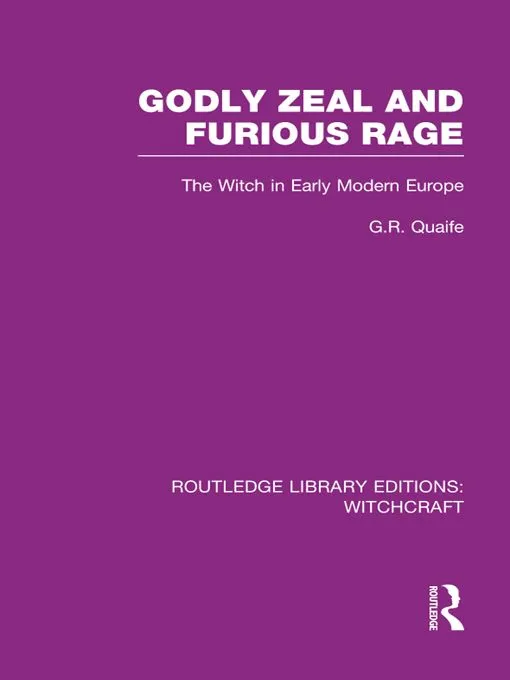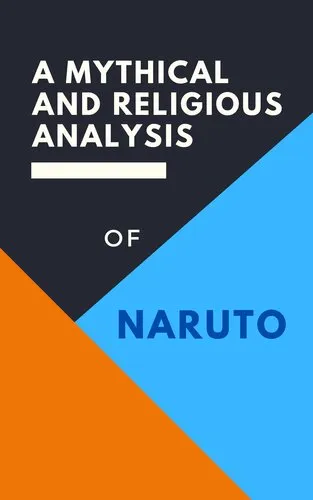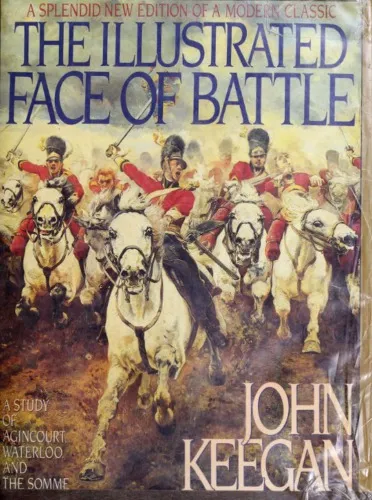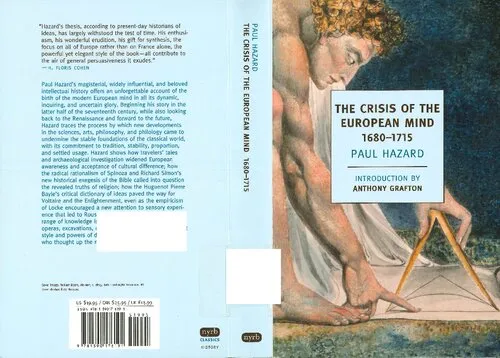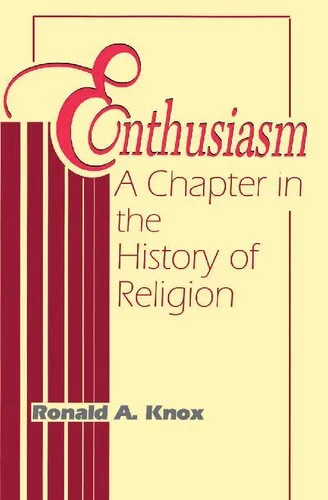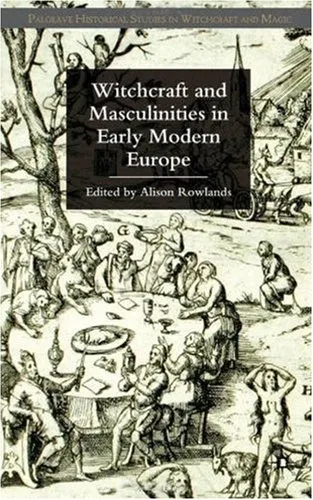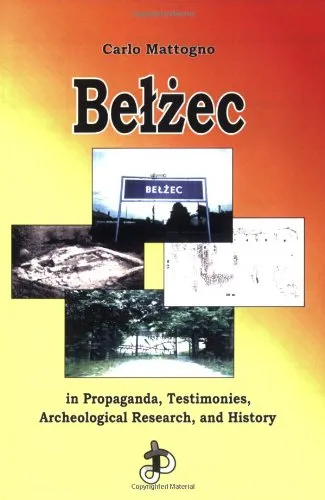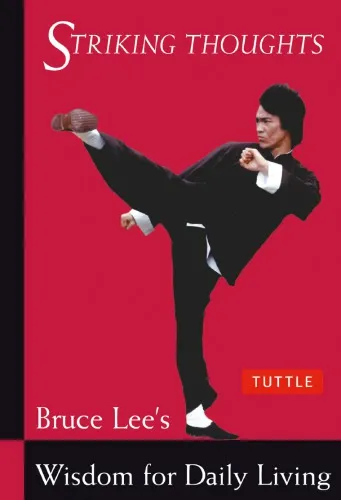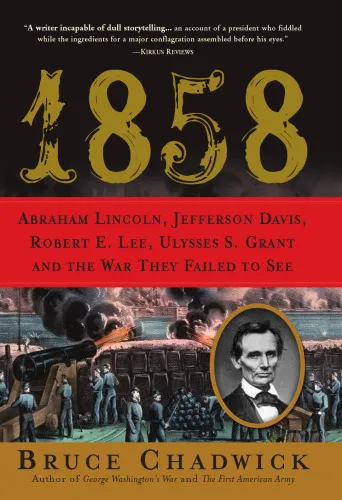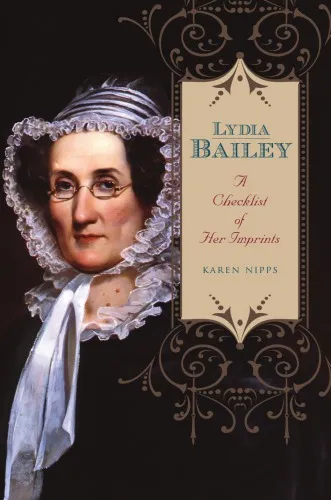Godly Zeal and Furious Rage: The Witch in Early Modern Europe
4.1
بر اساس نظر کاربران

شما میتونید سوالاتتون در باره کتاب رو از هوش مصنوعیش بعد از ورود بپرسید
هر دانلود یا پرسش از هوش مصنوعی 2 امتیاز لازم دارد، برای بدست آوردن امتیاز رایگان، به صفحه ی راهنمای امتیازات سر بزنید و یک سری کار ارزشمند انجام بدینکتاب های مرتبط:
معرفی کتاب 'Godly Zeal and Furious Rage: The Witch in Early Modern Europe'
کتاب 'Godly Zeal and Furious Rage: The Witch in Early Modern Europe' نوشته جفری رابرت کوئیف یکی از برجستهترین آثار در زمینه مطالعه جادوگری در اروپا در دوران مدرن اولیه است. این کتاب به بررسی عمیق جنبههای مذهبی، اجتماعی، سیاسی و فرهنگی شکار جادوگران پرداخته و تلاش دارد تا مفاهیم جادو و ماهیت محکومیت جادوگری در این دوره حساس را آشکار سازد.
خلاصهای جامع از کتاب
این اثر پژوهشی با تمرکز بر تأثیرات عمیق دین و اعتقادات مذهبی بر رفتار انسانها در اروپا، واکنشهای خشن و شدید جوامع را در برابر جادوگران بازنمایی میکند. کوئیف به قشرهای مختلف تاثیرگذار، همچون رهبران مذهبی، قضات و عموم مردم در این تحولات، اشاره کرده و نشان میدهد که چگونه ترس، خرافات، و سیاست به تداوم این وضعیت دامن زدهاند. از تکنیکهای استنتاج تاریخی و منابع کمیاب برای تحلیل استفاده شده و دیدگاههای تازهای ارائه گردیده که میان پیچیدگیهای فرهنگی دوره ارتباط ایجاد میکند.
نکات کلیدی کتاب
- تأثیر ترکیبی مذهب و سیاست در شکلگیری محاکمات جادوگری.
- روشهای نظاممند برای کشف، متهم کردن، و محاکمه جادوگران.
- نقش فرهنگ عوام و خرافات در تقویت اتهامات علیه افراد آسیبپذیر.
- تحلیل عواقب اجتماعی-فرهنگی محاکمات جادوگری بر جوامع اروپایی.
جملات معروف کتاب
"The witch trials were not just a consequence of popular superstition, but a deliberate and systematic operation fueled by political and religious zeal."
"Fear, power, and dogma intertwined to create a deadly cocktail that precipitated one of history's most harrowing phenomena."
چرا این کتاب اهمیت دارد؟
این کتاب از منظر تاریخی به یکی از تاریکترین بخشهای تاریخ اروپا مینگرد و به خوانندگان کمک میکند تا چرایی و چگونگی این رویدادها را بهتر درک کنند. در دورانی که مسائل مرتبط با خرافات و تعصب همچنان مسائل قابل بحث هستند، پژوهش جامع کوئیف ابزار ارزشمندی برای مرور گذشته و جلوگیری از تکرار چنین اشتباهاتی ارائه میدهد. همچنین، این اثر به دانشجویان، محققان و علاقهمندان تاریخ اروپا کمک میکند دید روشنی از دوران مدرن اولیه بیابند.
Introduction to "Godly Zeal and Furious Rage: The Witch in Early Modern Europe"
"Godly Zeal and Furious Rage: The Witch in Early Modern Europe" examines one of the most fascinating and tragic phenomena in European history: the witch hunts of the early modern period. This meticulously researched book explores the complex interplay of religion, politics, culture, and societal fears that fueled the persecution of countless individuals accused of witchcraft. Through an in-depth analysis of historical records, theological debates, and cultural narratives, the work sheds light on how zealotry and fervor often paved the way for suspicion and hysteria. More than just a historical study, this book delves into the human condition, exploring the contours of fear, power, and morality in a rapidly changing world.
The early modern period, spanning roughly from the 15th to the 18th century, was marked by profound transformations—religious upheaval, challenges to traditional authority, and growing anxieties about the natural and supernatural worlds. It was within this turbulent context that the witch emerged both as a scapegoat and a symbol of societal anxieties. In "Godly Zeal and Furious Rage," I strive to unravel the motivations behind witch hunts, the role of religious zeal, and the voices—both prominent and forgotten—that shaped this dark chapter of European history.
Detailed Summary of the Book
The book is divided into several key sections, each addressing a critical aspect of the witch hunts. Beginning with the historical origins of witchcraft accusations in medieval Europe, I explore how these evolved in response to shifting political landscapes, the spread of Protestantism, and the Catholic Reformation. These religious movements heightened tensions and fostered an atmosphere ripe for accusations and superstition.
The narrative progresses to dissect the mechanisms of witch trials, from local village accusations to the formalized procedures of ecclesiastical and secular courts. Particular attention is paid to the stereotypes surrounding witches—most notably women, who were disproportionately targeted—and how gender and power dynamics intersected with fears of witchcraft. Additionally, the book examines the role of key figures, such as inquisitors and judges, who fanned the flames of persecution, often projecting their own anxieties and ambitions onto their victims.
Throughout the book, I emphasize the cultural narratives that perpetuated the image of the witch. From folklore and literature to theological writing, I explore how witches were portrayed as malevolent figures opposing divine order, in turn legitimizing their persecution. However, amid these terrifying accounts, one also finds stories of resilience and defiance. The voices of accused individuals, where preserved, provide harrowing yet inspiring glimpses into the human spirit’s capacity to endure injustice.
Key Takeaways
- The witch hunts were not isolated incidents but part of a broader confluence of religious, political, and cultural crises in early modern Europe.
- While women were primary targets, especially older or socially marginalized women, men also faced accusations and executions.
- Religion played a double-edged role, fueling accusations while also providing the moral underpinning for such prosecutions.
- The spread of the printing press and popular media amplified panic, embedding stereotypes of witches into European consciousness.
- Ultimately, the decline of witch hunts was linked to the rise of rationalist thought, changing legal practices, and growing skepticism toward superstition.
Famous Quotes from the Book
"The witch was never an isolated figure of evil, but rather the focal point of a society grappling with internal contradictions, rivalries, and fears."
"Amid the ashes of burned witches lies the evidence of humanity’s capacity for fear, cruelty, and complicity."
"The history of the witch hunt is not merely about persecution, but also about the enduring power of narratives to shape reality."
Why This Book Matters
Understanding the witch hunts of early modern Europe is essential for comprehending how fear and zealotry can lead to injustice. "Godly Zeal and Furious Rage" serves as a cautionary tale about the dangers of scapegoating, the misuse of religious authority, and the societal impact of unchecked power. By studying this historical phenomenon, we gain insight into the resilience of the human spirit and the importance of rational thought in combating prejudice and superstition.
Today, while the literal witch hunts have ceased, metaphorical "witch hunts" persist in various forms. This book equips readers to recognize and confront the psychological and societal mechanisms that continue to drive unjust persecution in modern times. It is both a historical analysis and a relevant commentary on human behavior across centuries. For historians, theologians, and anyone grappling with questions of justice, power, and morality, "Godly Zeal and Furious Rage" offers profound lessons and timeless truths.
دانلود رایگان مستقیم
شما میتونید سوالاتتون در باره کتاب رو از هوش مصنوعیش بعد از ورود بپرسید
دسترسی به کتابها از طریق پلتفرمهای قانونی و کتابخانههای عمومی نه تنها از حقوق نویسندگان و ناشران حمایت میکند، بلکه به پایداری فرهنگ کتابخوانی نیز کمک میرساند. پیش از دانلود، لحظهای به بررسی این گزینهها فکر کنید.
این کتاب رو در پلتفرم های دیگه ببینید
WorldCat به شما کمک میکنه تا کتاب ها رو در کتابخانه های سراسر دنیا پیدا کنید
امتیازها، نظرات تخصصی و صحبت ها درباره کتاب را در Goodreads ببینید
کتابهای کمیاب یا دست دوم را در AbeBooks پیدا کنید و بخرید
1238
بازدید4.1
امتیاز0
نظر98%
رضایتنظرات:
4.1
بر اساس 0 نظر کاربران
Questions & Answers
Ask questions about this book or help others by answering
No questions yet. Be the first to ask!
